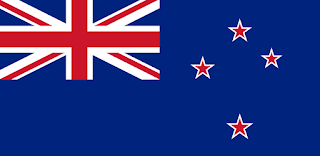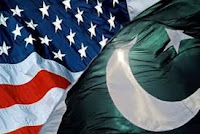New Zealand
Hello people! Looking to revise or grow
your awareness about New Zealand? Then you have found the right place to do so.
This article covers a brief and concise history
of New Zealand and details about the present state of the country. So, let’s
not waste time and get started.
New Zealand is a country located in
the continent of Australia. It is a sovereign state situated in Pacific Ocean.
New Zealand is mainly formed by two big islands: North and the South islands
respectively along with many smaller islands. The capital city of New Zealand
is Wellington since 1865. Wellington is the second largest city of New Zealand.
Before it, Auckland was New Zealand’s
capital. Auckland is ranked as the largest city of New Zealand. Both of these cities are located on the North
Island of the country. Christchurch is the largest city on the South Island. The
official languages of New Zealand are English, Maori and New Zealand Sign
Language. The national symbol of New Zealand is Kiwi. Kiwi is a native bird
which lost the ability to fly through evolution; simply put they are flightless
birds. These days the people of New Zealand are also nicknamed as “Kiwis”. In 2010,
New Zealand was placed at number 8 in the list of happiest nations in the
world. New Zealand is a constitutional dominion and a parliamentary democracy. Queen
Elizabeth II is the head of the state. Current Prime Minister of New Zealand is
Jacinda Ardern.
Now let’s have a look at the short
history of New Zealand.
The name “New Zealand” comes from “Zealand”
in Dutch. Zealand is one of the provinces of Netherlands. In the Maori language,
New Zealand is also called “Aotearoa” which means the “Land of Long White Cloud”.
If we further break the term Aotearoa; Ao means cloud, tea means white and roa
means long. In 1642, a Dutch voyager Abel Tasman sighted New Zealand and he
named it as Staten Land. However, in 1645 the Dutch renamed the land as Nova
Zeelandia. Later, British voyager James Cook named it New Zealand. James Cook,
a British Captain discovered the coastlines of New Zealand in 1769-1777. He went
around both islands and charted the shores.
Eastern Polynesians were first
settled in New Zealand from 1250 to 1300. With the passage of time, the early
settlers developed a distinctive culture which is now famous as Maori. In 1642,
when the European voyager Abel Tasman and his crew reached New Zealand and he and his crew faced a tough encounter with
the locals. In this hostile meet up with the locals four crew members were slaughtered
and one of the Maoris was hit by the canister shot. After this incident
Europeans did not visit New Zealand until 1969 when British explorer James Cook
mapped the coastline. After James Cook many Europeans visited New Zealand in
different years. Trade for different items started between the visitors and the
locals. Trading items included food, metal tools and weapons. During the 19th
century, Christian disciples started to settle in New Zealand and converted
many of the Maori people to Christianity.
In 1788, Capt Arthur Phillip took the
position as the Governor of New South Wales, a colony of British and according
to his charge, it also included New Zealand. However in 1832, the British
government selected James Busby as British Resident to New Zealand in the aftermath
of a petition from the North Maori. In 1835, the united tribes of New Zealand
sent a declaration of Independence to King William IV of UK and asked for help
following a proclamation of approaching French settlement by Charles de
Thierry. The New Zealand Company and legal standing Declaration of Independence
signaled the Colonial Office to pitch Capt William Hobson to declare sovereignty
for UK and discuss treaty with the Maori. Treaty of Waitangi was signed on 6th
February 1840. On 21st May 1840, Hobson declared the British independence
throughout New Zealand. After signing of the treaty, many migrants especially the
British commenced to increase in the country.
On July 1st 1841 New
Zealand became separate Colony of New Zealand. This colony added a representative
government in 1852. The first time parliament congregated in 1854. There were
concerns that the South Island might create a separate colony and to address
this issue Alfred Domett the premier moved a declaration to transfer the
capital from Auckland to a place near Cook Strait. Wellington was chosen as the
new capital because of its central location and Parliament officially was moved
there in 1865. In the early 20th century New Zealand was involved in
the international affairs
.
In 1914 when the World War I started,
New Zealand gave thousands of troops to British war campaign. In 1915, the New
Zealand troops suffered heavy losses in the battle of Gallipoli in Turkey. In the
years of Great Depression, New Zealand faced very tough time economically. Not only
during the First World War, New Zealand sided with the British in World War II.
In 1939, when the World War II started, troops from New Zealand took part in the
battles in Europe, Africa and Pacific. At the end of Second World War, New
Zealand was paving the way to independence from the British.
In 1947, New Zealand achieved full
independence from the Britain by removing the last limitations on the right of
its parliament to alter its constitution. In 1950, New Zealand sent troops to
UN in the Korean Wars of 1950-53. Moreover,
New Zealand’s role in international arena grew with the passage of time. In 1951,
New Zealand signed the security treaty of Anzus Pacific with Australia and USA.
In the 1960s during US war in Vietnam, New Zealand supported the US by sending
a small force of its troops. This move by New Zealand ignited a public debate. During
the year of 1985, New Zealand repudiated the US to allow US nuclear powered ships
to enter its ports. Following this, US suspended the Anzus treaty for New
Zealand. However, New Zealand continued to grow and keep itself in a better
position.
Today, when we see New Zealand, it is
a beautiful country. New Zealand is also very good in sports but however its
cricket team has never won the ODI Cricket World Cup despite having a very good
cricket team. New Zealand has managed to make itself a nuclear free zone. Kiwis
do not use nuclear technology for power generation neither they use nuclear
technology for military purposes. New Zealand is a beautiful place to visit and
enjoy the life over there. We hope you liked the article. Don’t forget to
comment and let us know.




Comments
Post a Comment